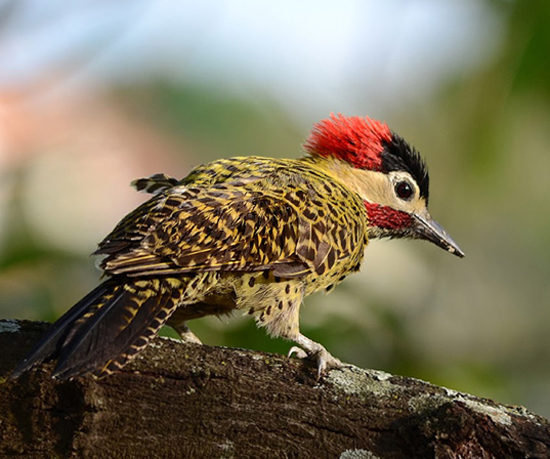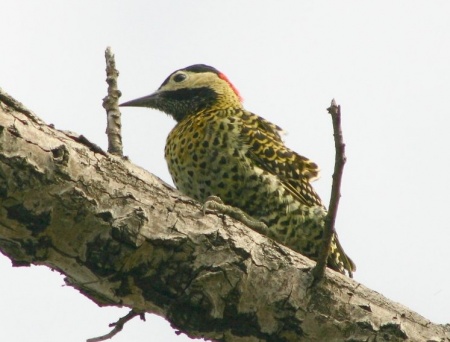KCFoggin-243 (talk | contribs) |
KCFoggin-243 (talk | contribs) |
||
| Line 1: | Line 1: | ||
'''Alternative name: Golden-breasted Woodpecker''' | '''Alternative name: Golden-breasted Woodpecker''' | ||
| − | [[Image:Green-barred WoodpeckerCP.jpg|thumb|550px|right|Male<br />Photo by {{user|Celso+Paris|Celso Paris}}<br /> Sorocaba, Sao Paulo, [[Brazil]], July 2015]] | + | [[Image:Green-barred WoodpeckerCP.jpg|thumb|550px|right|Male<br />Photo © by {{user|Celso+Paris|Celso Paris}}<br /> Sorocaba, Sao Paulo, [[Brazil]], July 2015]] |
;[[: Category:Colaptes|Colaptes]] melanochloros | ;[[: Category:Colaptes|Colaptes]] melanochloros | ||
Revision as of 20:57, 12 October 2018
Alternative name: Golden-breasted Woodpecker
- Colaptes melanochloros
Identification
27–30 cm
The male has a red malar while the female has a black malar. Both sexes are pale green with white on the sides of the head and red on the crown and nape while the forecrown is black. The upperparts are barred black while the underparts have black, heart-shaped spots.
Distribution
South America: this species has 5 subspecies which together occupy parts of Brazil, Bolivia, Paraguay, Uruguay, and Argentina.
Taxonomy
Subspecies
There are 5 subspecies[1]:
- C. m. melanochloros:
- C. m. nattereri:
- North-eastern Brazil to Bolivia (Santa Cruz)
- C. m. melanolaimus Golden-breasted Woodpecker:
- Arid upland valleys of central and southern Bolivia
- C. m. nigroviridis:
- Southern Bolivia to western Paraguay, northern Argentina and western Uruguay
- C. m. leucofrenatus:
- North-western and west-central Argentina (south to Neuquén and west Río Negro)
Habitat
A variety of habitats from forest to caatinga and desert scrub.
Behaviour
Diet
Their diet consists almost entirely of ants.
References
- Clements, J. F., T. S. Schulenberg, M. J. Iliff, D. Roberson, T. A. Fredericks, B. L. Sullivan, and C. L. Wood. 2014. The eBird/Clements checklist of birds of the world: Version 6.9., with updates to August 2014. Downloaded from http://www.birds.cornell.edu/clementschecklist/download/
- Avibase
- Arthur Grosset
- BF Member observations
- Handbook of the Birds of the World Alive (retrieved December 2014)
Recommended Citation
- BirdForum Opus contributors. (2024) Green-barred Woodpecker. In: BirdForum, the forum for wild birds and birding. Retrieved 25 April 2024 from https://www.birdforum.net/opus/Green-barred_Woodpecker
External Links





